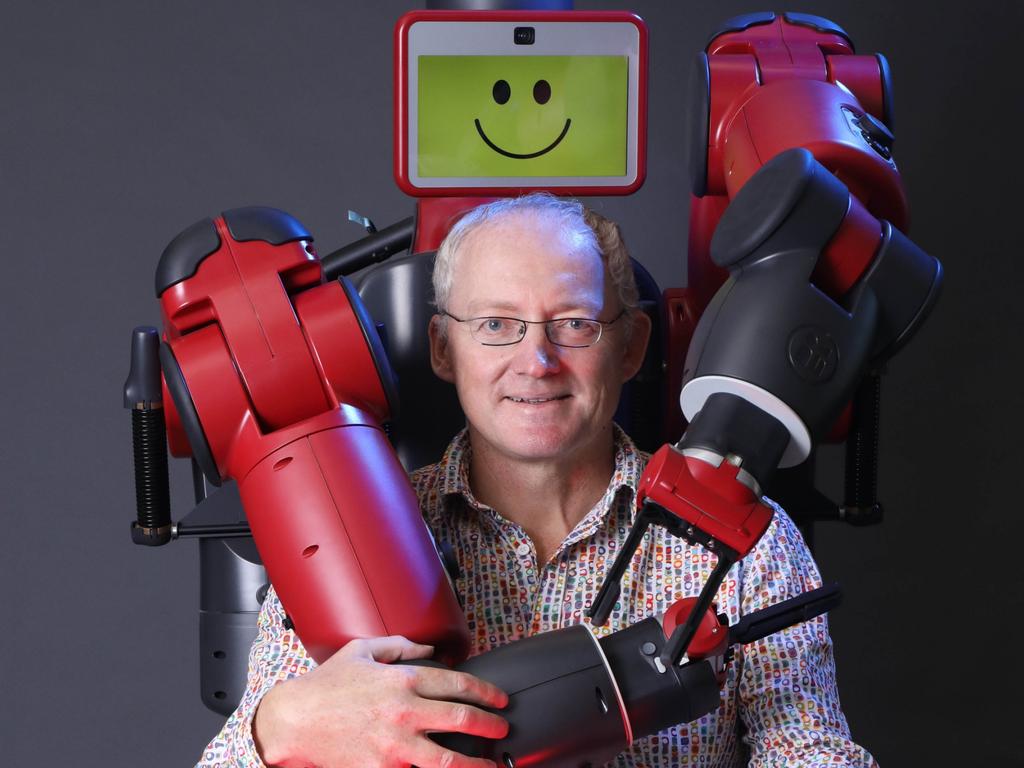‘Speed and ease’: Australian scientists’ AI breakthrough changes drug science
Australian scientists have developed an AI program that can synthesise proteins for medical use, changing the field of biochemistry.

Australians progressing the work of a Nobel prize-winning chemist have developed a superbug-destroying protein using artificial intelligence, a watershed moment in the science of drug synthesis.
American biochemist David Baker was last year recognised with the Nobel prize in Chemistry for his work developing an AI model that can formulate proteins for medical application from their amino acid building blocks.
Protein science was traditionally a laborious trial-and-error process requiring a near-impossible level of data analysis, slimmed down by predictive models that can extrapolate far faster than a human-developed model.
Where a traditional computer would be forced to churn through protein combinations until it found a viable pattern, generative AI can use pattern recognition to slim down the potential combinations it tests and learns as it goes how to improve accuracy.
Australian biochemists Gavin Knott and Rhys Grinter have led Australia into an esteemed cohort of nations with access to protein-designing AI after their successful development of a model, the science of which is set to be published in Nature Communications.
Their model, the AI Protein Design Platform, was road-tested on antibiotic resistant E. coli and provided a promising new group of drugs that could be used to beat infections without increasing the resistance of surviving germs.

“As soon as I saw the work that Dave Baker and other people were doing, I was like this is going to change everything we do in this field. It’s almost an overnight thing; it was a problem that hadn’t been solved before and was suddenly solvable by computers,” Dr Grinter told The Australian.
“I’ve got an ongoing interest in treating antibiotic-resistant bacteria and had a project looking at how these bacteria get essential nutrients they need when they infect our bodies … I was looking at this system, trying to figure out ways to target it, and we figured out we could use these AI-designed proteins to block this system.
“We generated a lot of these designs in the computer, and then we basically transferred them into the lab and tested them … We discovered some really potent new molecules for stopping the growth of this pathogenic E. coli.
“I was talking with Gavin over a couple of months and we said we have to try this, we have to implement this in Australia and see if we can get it to work. Because if it does then it’s going to be the next big thing.”
Applications are vast and adaptable, with Dr Grinter pointing to ongoing research in vaccine development and the treatment of cancer and snakebites. “The speed and the ease of doing it, and the economics, will really speed up these applications,” he said.
“Stuff like synthetic anti-venoms would be really cool. I think a really promising application we’re thinking about and we haven’t done yet would be in personalised cancer medicine.
“Gavin and I really want to make these tools available to other researchers who are working in diverse fields so we can maximise the potential benefit. “
While open sources models are a boon for innovation, he said the programs could be appropriated and used for their inverse function – to develop new and unrecognisable chemical weapons.
“It’s something that holistically governments and regulatory bodies need to think about how to address,” he said.
“The possibility really does exist for bioterrorism uses and nefarious actors who might deliberately make something which could be harmful. That’s something which the community and regulatory bodies are watching very closely and trying to develop a framework for.”
Associate Professor Knott said the breakthrough boosted Australia’s sovereign research capabilities and bridged one of the last gaps in biomedical synthesis, following the development of small molecule and antibody drugs.
“Ibuprofen, Panadol, these are small molecules. Then your antibody-based therapeutics and drugs, these are based on molecules from our own immune system and the immune system of other animals. Then you have these new AI-designed proteins,” he explained.
“What you can achieve with an AI-designed protein doesn’t necessarily replace small molecules or antibodies, but it’s a new modality that allows us to go where small molecules and antibodies cannot.
“This takes the whole drug discovery pipeline and reduces it down to weeks or months. This isn’t going to work for every disease, or every cancer or every emergent infectious disease, but it’s an incredibly transformative tool; there’s a lot of opportunities.
“This is a technology that other countries are absolutely supercharging their research programs with, and … now we’re working to really plug it into the research ecosystem.
“It’s going to be good for health, it’s going to be good for agriculture, it’s going to be good for biotechnology.”





To join the conversation, please log in. Don't have an account? Register
Join the conversation, you are commenting as Logout